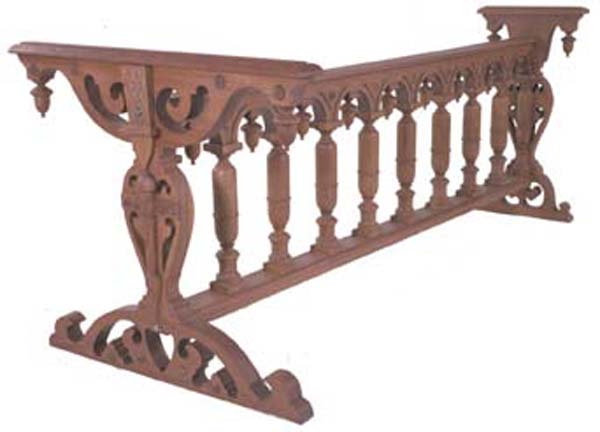Copy of a ‘French’ model Ruckers harpsichord
Made in
Edinburgh by Grant O’Brien in 1985

Details about
the stand
Much of the furniture and room
interiors in sixteenth and seventeenth century Antwerp were made of fumed and
rushed oak and resembled the furniture and interior design of the Tudor and
Jacobean styles in Britain. The
original of this stand is now painted to match the grisaille decoration of the
1620 Andreas Ruckers harpsichord in the Musikinstrumenten Museum in Berlin
(Berlin Musikinstrumentenmuseum Catalogue Number 2230). However it seems highly likely that the
stand was originally not painted so that the wood used to make the stand was
clearly in view. The surface of the
wood was not sanded to finish it - quite the opposite. A bundle of rushes were bound together and
the tough ends of the rushes were rubbed lengthways along the surface of the
oak. This process removed the softer
part of the wood and left ridges of the harder grain standing proud above the
surface of the rest of the wood. This
gave a pronounced 'texture' to the wooden surface and achieved exactly the opposite effect of
planing or sanding which of course leaves a very smooth surface. This procedure was known as
‘rushing’.
The oak furniture of this period
was also fumed using concentrated ammonia derived from processed horse
urine. The ammonia reacts with the
tannic acid in the oak and darkens not only the surface of the wood but also to a considerable depth below the
surface treated. This process had the
effect of darkening the wood uniformly in such a way that the relationship of
the dark and light colours in the grain of the wood was retained. Staining the wood with wood dye has the
opposite effect since the dye is preferentially taken up by the soft
light-coloured wood. The harder, darker
part of the wood takes up the dye only weakly.
This means that the grain and figure of the wood is obscured by staining
since the two colours tend to end up almost the same, or indeed the
relationship of the colours of the dark and light colours may even be
interchanged. Also staining only
affects the uppermost surface of the wood without penetrating into the depth of
the wood itself. Any subsequent damage
to dyed wood then becomes clearly visible.
The process of treating the oak with ammonia fumes is known as ‘fuming’
and oak treated in this way is known as ‘fumed oak’.
After rushing and fuming the oak of the copy of the stand was oiled with boiled linseed oil to seal the surface and, after about a month’s time during which the linseed oil dried thoroughly, was then waxed and polished.
Return to the main page of this section
